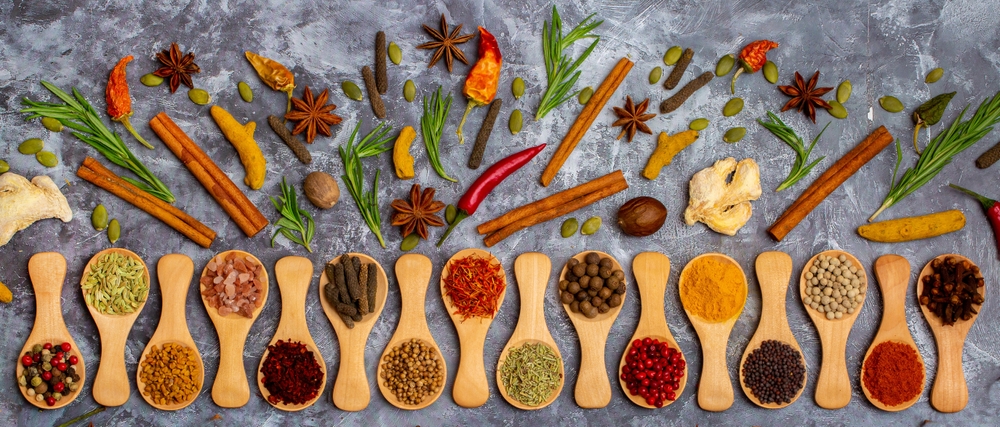Spices and herbs have long been celebrated for their ability to transform bland dishes into culinary masterpieces. From the sharp kick of chili pepper to the subtle warmth of cinnamon, these natural flavorings are staples in kitchens around the world. However, their value extends far beyond mere taste enhancement. Across cultures and centuries, herbs and spices have also been cherished for their potent medicinal properties. Modern science is increasingly confirming what traditional medicine has long known: many of the common spices and herbs we use daily are not just flavorful—they are also powerful tools for promoting health and well-being.

The Historical Roots of Healing
The use of herbs and spices as medicine dates back thousands of years. Ancient Ayurvedic texts from India, Traditional Chinese Medicine (TCM) scrolls, and Egyptian papyri all describe various herbs and spices used to treat ailments. In these traditions, spices were more than food enhancers; they were integral to healing rituals and preventative health strategies. Turmeric, for example, has been used in India for over 4,000 years for its anti-inflammatory and antiseptic qualities. Similarly, garlic was prescribed by Hippocrates, the father of Western medicine, for treating various medical conditions.
While the wisdom of these ancient systems was based largely on observation and experience, contemporary science has begun to dissect and validate many of their claims, identifying the bioactive compounds responsible for the health benefits of spices and herbs.
Turmeric: The Golden Healer
Turmeric (Curcuma longa), often referred to as the “golden spice,” is one of the most studied herbs in the world. Its active ingredient, curcumin, has powerful anti-inflammatory and antioxidant properties. Inflammation is at the root of many chronic conditions, including heart disease, cancer, metabolic syndrome, and Alzheimer’s disease. Studies suggest that curcumin may help modulate inflammatory responses in the body and reduce oxidative stress, which contributes to cellular damage and aging.
Furthermore, curcumin has been shown to support joint health, reduce symptoms of arthritis, and even improve mood by boosting levels of brain-derived neurotrophic factor (BDNF), a protein linked to cognitive function and mental health.
Garlic: Nature’s Antibiotic
Garlic (Allium sativum) is a common kitchen ingredient known for its pungent aroma and sharp flavor. But beyond its culinary use, garlic has earned a reputation as a natural antibiotic. The compound allicin, which is released when garlic is chopped or crushed, has antimicrobial, antiviral, and antifungal properties. Garlic is known to support cardiovascular health by lowering blood pressure, reducing LDL cholesterol, and improving arterial flexibility.
Research also suggests that garlic can enhance immune function. Regular consumption may reduce the frequency and duration of common colds and respiratory infections, making it a valuable ally during flu season.
Ginger: The Digestive Dynamo
Ginger (Zingiber officinale) is well-known for its ability to soothe digestive discomfort. Its bioactive compound, gingerol, has potent anti-inflammatory and antioxidant effects. Ginger is widely used to alleviate nausea—particularly morning sickness during pregnancy and chemotherapy-induced nausea. It also helps reduce muscle pain and soreness, making it a favorite among athletes and active individuals.
Moreover, ginger has been shown to aid in digestion by accelerating gastric emptying, relieving bloating, and supporting gut health. Its warming properties stimulate circulation and may help manage blood sugar levels, potentially offering benefits for individuals with type 2 diabetes.
Cinnamon: Sweet and Therapeutic
Cinnamon (Cinnamomum verum or Cinnamomum cassia) adds a sweet-spicy note to baked goods and savory dishes alike. It also boasts a range of health benefits, especially in managing blood sugar. Cinnamaldehyde, the main active compound in cinnamon, can mimic the effects of insulin and improve glucose uptake by cells. This makes cinnamon particularly beneficial for individuals with insulin resistance or type 2 diabetes.
In addition to its metabolic effects, cinnamon has antimicrobial properties that can help fight infections and spoilage in foods. It’s also rich in antioxidants, which protect the body from oxidative damage.
Basil: More Than a Culinary Delight
Basil (Ocimum basilicum) is a fragrant herb frequently used in Mediterranean and Southeast Asian cuisine. It’s rich in eugenol, a compound with anti-inflammatory and antibacterial effects. Basil is also high in vitamin K, which is essential for blood clotting and bone health.

A related variety, holy basil (Ocimum sanctum or tulsi), holds a sacred status in India and is used in Ayurvedic medicine to treat stress, respiratory conditions, and inflammation. Studies suggest that tulsi may help regulate cortisol levels, reduce anxiety, and support immune resilience.
Oregano: A Potent Antioxidant
Oregano (Origanum vulgare) is not just a pizza topping—it’s a powerful herb packed with antioxidants, especially carvacrol and thymol. These compounds have antimicrobial properties that can help fight off bacteria and viruses. Oregano oil is often used as a natural remedy for respiratory infections and digestive issues.
Moreover, oregano is rich in polyphenols that help neutralize free radicals and support immune function. Its anti-inflammatory qualities make it a useful herb for managing chronic conditions and enhancing overall vitality.
Parsley, Cilantro, and Detoxification
Both parsley and cilantro are often used as garnishes, but their health benefits are anything but decorative. Parsley is rich in vitamins A, C, and K, and acts as a mild diuretic, helping the body eliminate excess fluids and toxins. Cilantro is known for its ability to chelate heavy metals, binding to toxins and assisting in their removal from the body.
These herbs also contain antioxidants and support healthy digestion. Including them regularly in your diet can promote detoxification and support kidney and liver health.
The Synergy of Spices
One of the most fascinating aspects of herbs and spices is their synergistic potential. When combined, they often enhance each other’s effects. For example, black pepper contains piperine, which significantly increases the bioavailability of curcumin in turmeric. This is why traditional recipes like Indian curry often combine these two ingredients—not only for flavor but also for health optimization.
In many traditional cuisines, the use of a variety of spices in a single dish is not accidental. These combinations often create a balanced and potent mix of anti-inflammatory, antioxidant, and immune-boosting agents that work together harmoniously.
Integrating Spices and Herbs Into Daily Life
Incorporating more herbs and spices into your diet doesn’t require a drastic change. Simple strategies include:
- Adding turmeric and black pepper to soups, stews, and scrambled eggs.
- Drinking ginger or cinnamon tea.
- Using fresh garlic in salad dressings or roasted vegetables.
- Tossing chopped cilantro or parsley into salads and grains.
- Enhancing meals with spice blends like za’atar, garam masala, or herbes de Provence.
Herbs and spices can also be used in non-culinary ways—infused into oils, added to natural remedies, or used in teas and tonics.
Conclusion
While modern medicine plays a crucial role in treating disease, the humble herbs and spices in our kitchens offer an often-overlooked avenue for enhancing health and preventing illness. With their wide-ranging benefits—anti-inflammatory, antimicrobial, antioxidant, and beyond—common spices and herbs represent a bridge between nourishment and medicine. Embracing them not just as flavor agents but as integral components of a healthful lifestyle allows us to reconnect with ancient wisdom and modern science in a delicious and powerful way.
